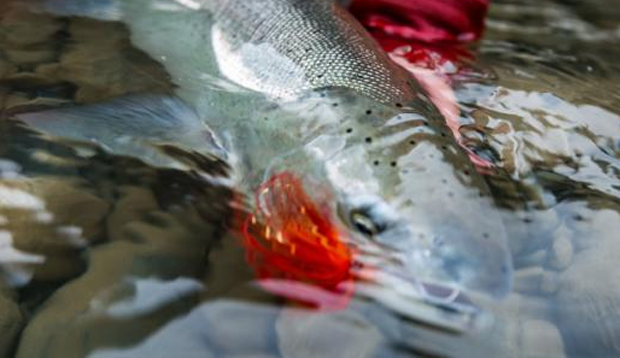 Note: Recently an angler responded to a post on the Wild Steelheaders Facebook page, arguing that instead of managing some rivers solely for wild steelhead we should use “brood stock wild fish” to create “superior hatchery fish,” interbreeding would become “mute” [sic], and that this mixture of hatchery and wild steelhead would create “healthy stocks with ample supply for spawning and retention [harvest].” This angler also demanded the post’s author, John McMillan, publish his research that documented small male resident rainbow trout successfully spawning with adult female steelhead — a significant nexus between resident and anadromous forms in the life histories of O. mykiss.
Note: Recently an angler responded to a post on the Wild Steelheaders Facebook page, arguing that instead of managing some rivers solely for wild steelhead we should use “brood stock wild fish” to create “superior hatchery fish,” interbreeding would become “mute” [sic], and that this mixture of hatchery and wild steelhead would create “healthy stocks with ample supply for spawning and retention [harvest].” This angler also demanded the post’s author, John McMillan, publish his research that documented small male resident rainbow trout successfully spawning with adult female steelhead — a significant nexus between resident and anadromous forms in the life histories of O. mykiss.
One of the highest priority goals of the Wild Steelhead Initiative and Wild Steelheaders United is to share the most current, rigorous science on steelhead biology and management with the angling community, to better inform the people who care the most about steelhead. The kind of response required here is too detailed for a Facebook comment, so we have posted John’s response here and encourage readers to share it widely.
By John McMillan
[dropcap]F[/dropcap]irst, the identification and implementation of Wild Steelhead Gene Banks [as currently proposed for several Puget Sound rivers in Washington] is not something that I or Trout Unlimited proposed. Rather, it is a key component of WDFW’s Wild Steelhead Management Plan. The concept is something that was worked on for a number of years and was subject to public comment and dialogue.
The science indicates there is a need for both wild and hatchery rivers, so TU supports WDFW’s plan. The plan can be found here: http://wdfw.wa.gov/publications/00149/. There you will find more information on the concept of Gene Banks and their value to recovering wild steelhead populations and supporting wild steelhead fisheries.







